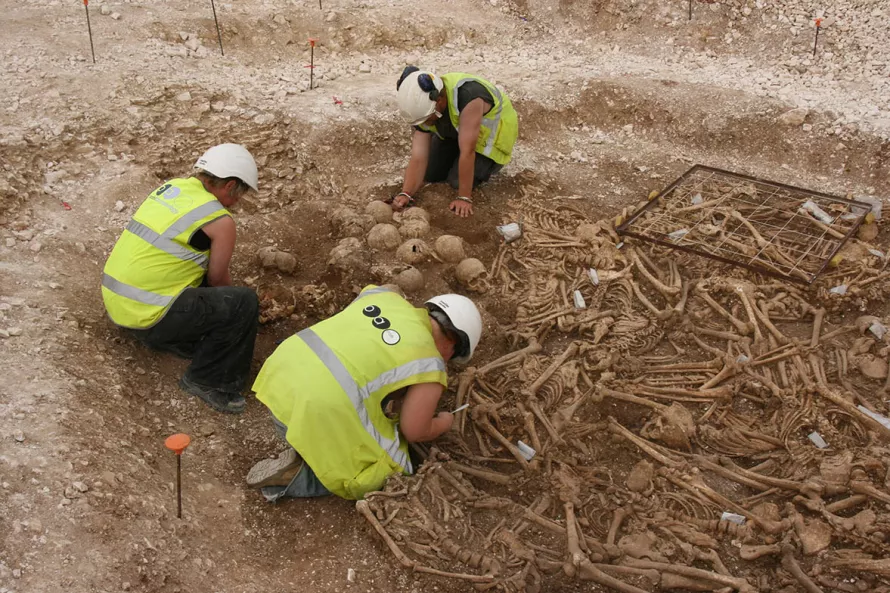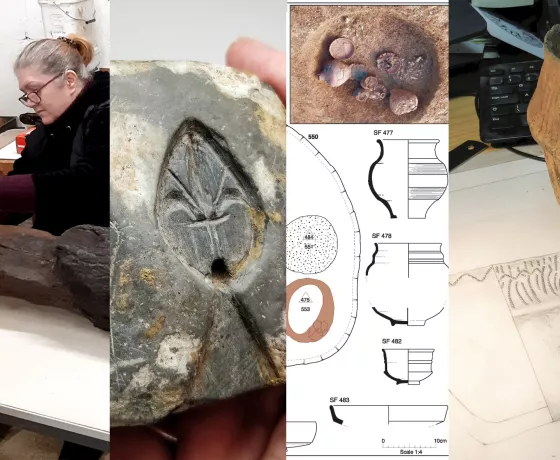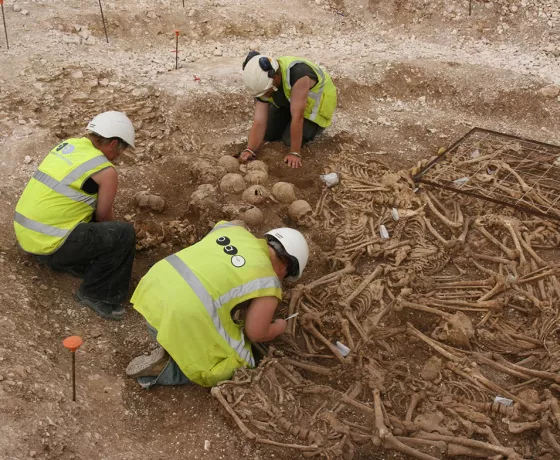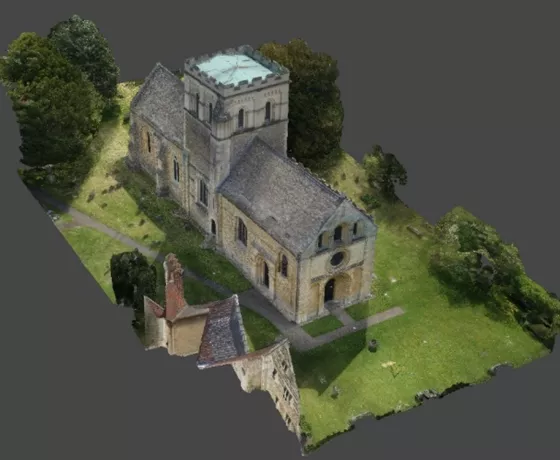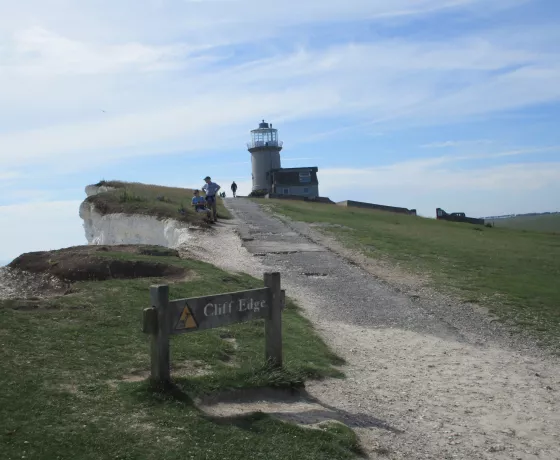What is Heritage Burial Services?
Heritage Burial Services (HBS) is a specialist group of human osteoarchaeologists who work to conserve the burial record and promote the value of the scientific study of human remains. Our work concerns examining human remains in their archaeological context to explore how the dead were treated and commemorated and to investigate past human health and disease, demography, biological variation, migration, social interactions, and lifestyle. We work with all kinds of burials, covering all time periods, from isolated prehistoric cremations and inhumations, to large, early modern burial grounds.
The group was established in the late 1990s/early 2000s when an upsurge in development resulted in a growing demand for burial archaeology. Two landmark projects at post-medieval graveyards in London, St Luke’s Church, Islington, and St George’s Church, Bloomsbury, were among the first commercial archaeology investigations of this nature to be undertaken in the country and involved the OA team. Postmedieval archaeology was a young discipline then, and methods for excavating and analysing post-medieval burials were in their infancy, so it was an exciting time to launch Heritage Burial Services.
Since then, we have undertaken a diverse range of burials projects all over the country, including burials of national and international significance, a rare Iron Age Arras-culture chariot burial at Ferrybridge, West Yorkshire; some 340 burials from the late Roman cemetery at Lankhills, Winchester; around 90 epidemic victims from a first to second-century AD mass burial pit at London Road, Gloucester; a Viking age mass grave near Weymouth and First World War mass graves in Northern France, among them. Since its establishment, HBS has expanded from one to seven members and has become one of the country’s most experienced and longest serving group of professional osteoarchaeologists.
We have excavated and examined thousands of burials, every one of them unique. It is an absolute privilege to be a group of professional experts, dedicated to sharing their stories.
Louise Loe
Head of Heritage Burial Services
When is it done and who for?
As we assist developers in meeting all their burial archaeology planning requirements, we work closely with our colleagues in Heritage Management Services, Fieldwork and Post-excavation, to provide our services at all stages of any project. Projects can be a housing development, quarry extension, road scheme, church refurbishment, or other type of development and may involve anything from advising on legislation and best practice, providing strategic advice, and undertaking desk-based research to inform planning applications, to evaluating and excavating burials, analysing and recording human remains and disseminating the findings.
We also undertake research projects with universities and other research institutions, national bodies such as Historic England, local interest groups and private individuals. Examples include analysis of a rare assemblage of prehistoric human remains from Charterhouse Warren Farm, Somerset with the University of Oxford (read more about the research here) and research on trench arch drains in churchyards for Historic England (the full report is available here). We also assist governments in humanitarian missions, to recover and identify missing in action soldiers from the First and Second World Wars, the largest of these being that which was undertaken in Fromelles, Northern France for the Australian Army and UK Ministry of Defence. The full "Remember Me to All" publication is available from our Knowledge Hub here.
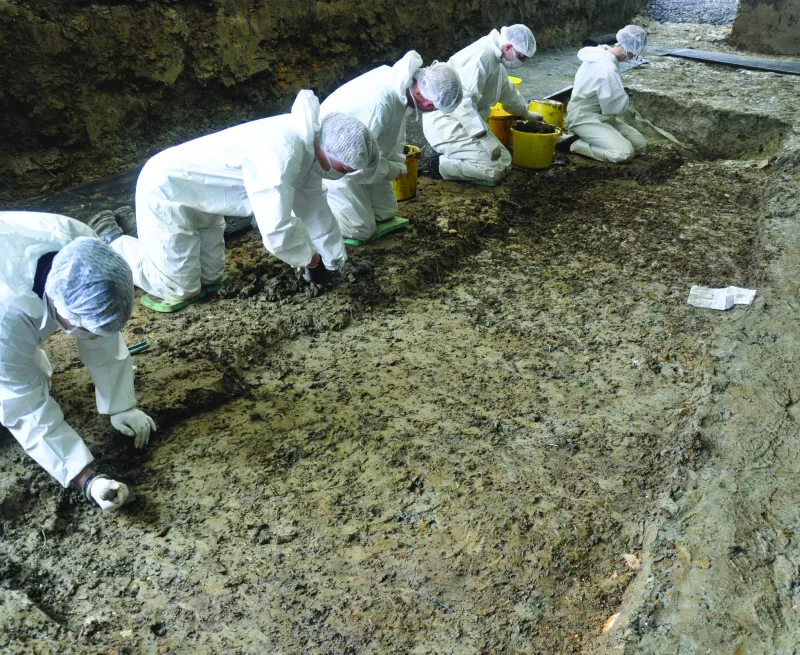
What do we actually do?
The physical remains of once living people, human remains provide a direct link with our past which goes far beyond any other type of archaeological find. They have considerable emotional, cultural and religious importance and we observe national codes of ethics and standards to ensure that all human remains are treated with care and respect and in accordance with relevant legislation at all times. We also follow, and have contributed to, national best practice and guidance for excavating and analysing human remains from archaeological sites.
Archaeologists from OA are investigating sites all the time, all over the country, so burials are frequently identified that require excavation and recovery. Often, these will have been identified before the fieldwork has started. Sometimes, burials are encountered where we least expect them, as was the case during our work at St Cross College, Oxford, where we found a Civil War period inhumation in what would have then been someone’s private garden. Burials turn up practically everywhere, so we are always on hand to provide advice and assist with excavation.
Methods of excavation are adapted to the type of burial (e.g. cremation or inhumation) and requirements of the site, whether this is because soil conditions are such that a skeleton has barely survived, or because the work is for a development which involves targeted investigation, rather than open plan excavation, for example.
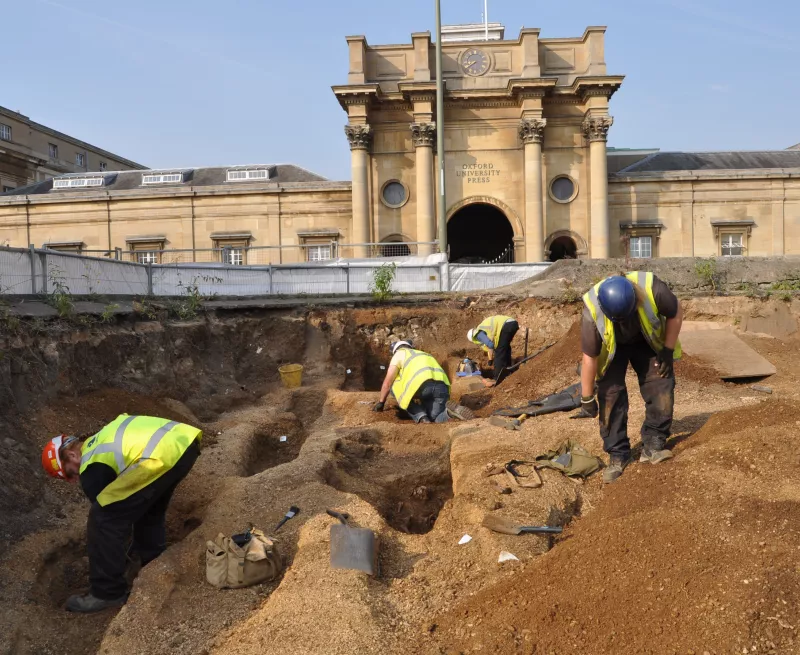
Highly complex deposits, such as mass graves are a category which require innovative techniques and we have extensive experience in this area having worked on examples from Roman, Viking and early modern period contexts. In addition, we have adapted and developed methodologies to meet the special constraints and requirements for excavating and clearing large burial grounds, including post-medieval and industrial era churchyards, crypts and vaults. Our innovative, rapid and pragmatic approach has helped us to address the particular issues associated with these sites, such as the sheer volume and concentration of burials, health hazards, legal requirements and logistical challenges.
Once recovered, all human remains are examined at our premises in Lancaster, Cambridge and Oxford, or sometimes in a temporary laboratory, set up on site. Each skeleton is examined individually and is recorded using our digital osteology recording system, to estimate sex, age and stature, and to record biological variation and evidence for modification, disease and trauma. In addition, cremations are examined for information on pyre technology, such as by considering the colour of the bone. All of these observations provide important information which, combined with burial context can tell us about past societies, in terms of their activities, interactions, burial practices, belief systems and other such factors. They can also contribute to modern understanding of disease and forensic analysis of human remains. We have made some fascinating discoveries and will share some of these in upcoming posts.
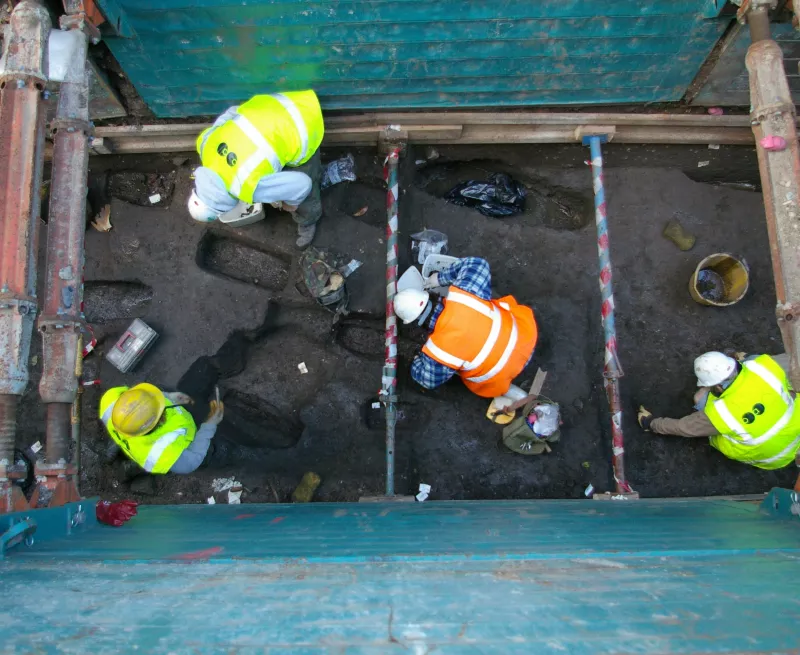
Working with others
We sometimes work with other scientists. With the assistance of radiographers, we obtain X-rays of grave related items and bones to, for example, identify disease and see how well or badly a fracture has healed. We employ radiocarbon to date human bone and analysis of other isotopes to explore diet, childhood origins and migration. In addition, we sometimes employ ancient DNA analysis to identify genetic sex, ancestry, familial relations, diseases and genetic anomalies. Relatively new to commercial practice, this aDNA work has already contributed towards some nationally important discoveries, such as the identification of Klinefelter syndrome, a genetic condition, in medieval and post-medieval skeletons excavated at Magdalen College and Trinity Burial Ground, Kingston-upon-Hull, respectively (read more here).
We share the findings of our work with the academic community and wider public through our technical and popular publications, journal articles, presentations at conferences, talks and workshops aimed at local history groups and on various media platforms, including television. We have hosted work experience and internships for students and have assisted museums in exhibitions of burials, including Vikings: life and legend at the British Museum and the Museum für Vor- und Frühgeschichte, Berlin, and Hidden Lives at the Wellcome Genome Campus, Cambridge.
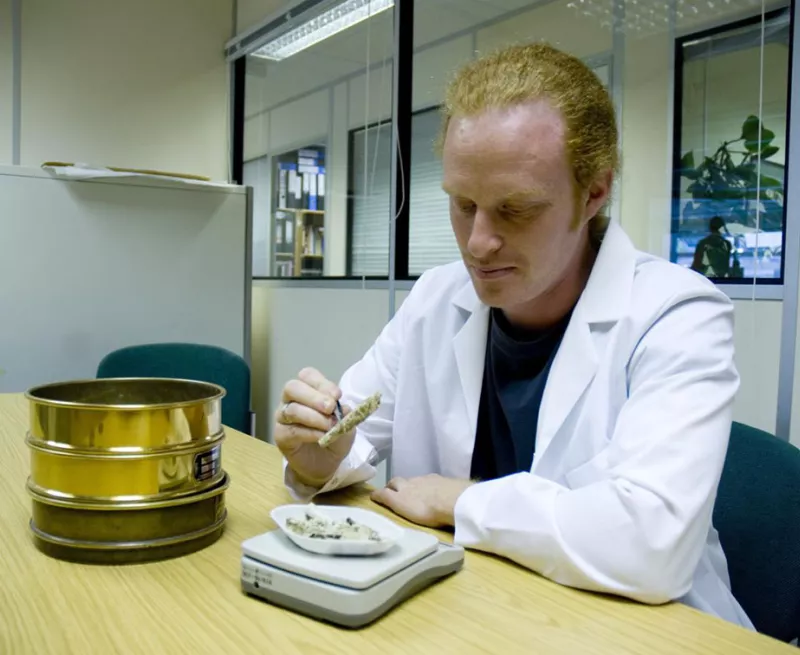
Other posts in this collection
Explore with us all the different disciplines and specialist areas that make up our archaeological practice.

